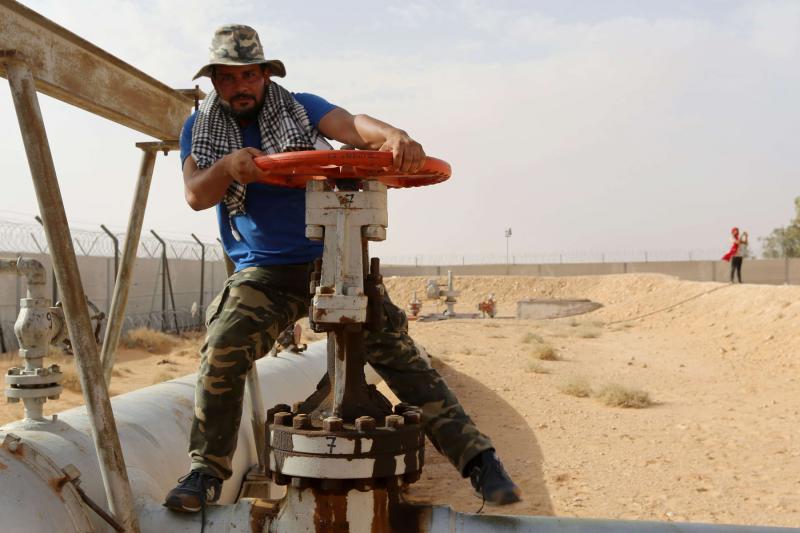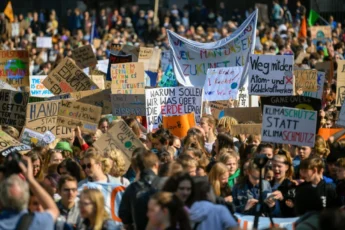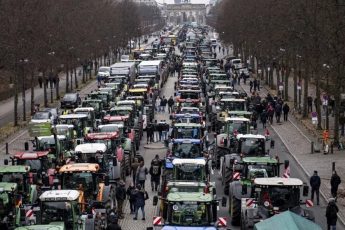
by MARCO MELITI (Climate Class Conflict-Italy)
The European Union and its states have recently proved to be as quick to express condolences for tragedies and crises as they are to promptly contain or exploit their effects . The ground on the Turkish-Syrian border had not yet stopped shaking when President von der Leyen announced the need to prevent new illegal migrations. The Ionian Sea had not yet returned the bodies of all migrants who died off the Calabrian coast when Italian President Meloni pompously announced the hunt for smugglers across the globe. These events confirm that the externalization of borders is a well-structured European policy to respond to the movements of migrant women and men. However, in a context deeply marked by the war in Ukraine, the same policy is applied to deal with the global effects of the Russian invasion. The EU competes in the global space by extending its influence beyond institutional borders through bilateral agreements, investments, logistical, and infrastructural corridors or through the creation of platforms – such as the energy platform. It participates in the rush for strategic resources by shortening or redefining production and supply chains, trying to govern workers’ movements, and planning the ecological transition in the medium and long term.
The RePowerEU plan precisely envisions the diversification of energy sources to immediately disengage from dependence on Russian gas, as well as investments in future clean energy production. To achieve these goals, the EU constitutively and continuously exceeds its borders, that is, intervenes in a transnational scenario in which any order is temporary. Indeed, its maneuvers are intertwined with the movements of capital and the policies of other states and international powers, as well as challenged by the resistance of those who seek to oppose all these commands. Within this tangle of interests and movements, any effort at order is temporary, and therefore the EU is left with only melancholic planning attempts. As on the eastern front, European plans in the Mediterranean intertwine the border regime with that of energy and climate policies. Today, securing a “Platz an der Sonne” in Africa requires, on the one hand, CEOs and government officials to promote new gas and oil deals or finance massive solar power plant projects or wind farms in the desert. On the other, coast guards, drones, and patrol boats are expected to ensure that migrants stay where they are. Thus, they are asked to capture and bring back those who manage to leave and attempt their route to Europe.
The Italian case in Libya is the most obvious, but certainly not the first nor the only one. European partnerships with the Southern Neighbourhood explicitly link green transition funds to migration containment funds. After becoming Europe’s first green partnerin October, Morocco signed a €624 million cooperation agreement with the EU in early March, including €115 million to support the African country’s green transition plans and another €150 million to counter migration. Tunisia looks set to take the same path. Meanwhile, it has signed a €200 million memorandum with Italy, in which cooperation to counter migration is linked to the creation of ‘sustainable’ jobs and the stimulation of renewable energy. Since the start of the war in Ukraine, Algeria has become a key energy supplier for Europe. Having accumulated billions in revenues from the export of fossil fuels, it now signs new agreements on gas with Italy and green hydrogen with Germany while pushing thousands of migrants back into the desert north of Niger. Egypt is also investing in hydrogen. In the meantime, it promises, along with Israel, to supply the EU with gas. Here, too, energy and migration policy are intertwined, as Italian Foreign Minister Tajani recently met with Al Sisi to secure his cooperation in repelling migrants and making up for the inefficiency of Libya, which is notoriously still not sufficiently equipped despite the millions provided by Italy and Europe.
The green transition becomes an opportunity to manage migration in the Mediterranean while promising a more livable climate, greener capitalism, and overall economic, political, and social stability – these being necessary conditions for preventing migrant departures. Thus, the transition is not simply a revolution in production, i.e., it is not limited to replacing oil with solar as a source for energy production or the heat engine with electric motors. Transition plans impact globally on the reproduction of the societies in which they take place. They promote a specific green environment which secures capital accumulation through the exploitation and reconfirmation of the social, patriarchal, and racist hierarchies. The push towards privatization and the transnational management of the energy sector is the necessity that sets the pace of North African transitions. The EU seeks to promote this environment through free trade agreements like the Deep and Comprehensive Free Trade Agreements (DCFTA), signed on the East-European borders with Ukraine, Moldova, and Georgia so far and now re-proposed on the Southern one. The World Bank calls for ending state investments in the North African energy sector and indicates a series of reforms to attract international private capital. Tunisian president Kaïs Saïed’s racism towards sub-Saharan migrants, however, is an embarrassment to world bankers, who have therefore frozen the possibility of a €20 million loan to Tunisia to build underwater cables for exporting solar energy to Europe. This shows that green transition plans use institutional racism only when it is not conveyed through conspiratorial discourses such as those of ethnic replacement promoted by the Tunisian president. For transnational investors, these discourses are actually a threat not so much to the lives of the migrants who are violently affected by them but to their investments. And since there is no transition without these investments, also there are no jobs to bind to a place those who are otherwise on the move.
Wherever they are implemented, transition plans do indeed need labor. In the fantasies of states and capital, migrants perfectly suit when they make themselves available for exploitation and their movement can be contained or enhanced according to market needs. They are useful to Europe, which sets by decree the number of workers it needs to exploit in poor, informal jobs. They are useful to transnational corporations and their plans to capitalize on the energy transition, so that they can announce the stabilization of those migrants in their places of origin. They are useful as a weapon of blackmail and pressure for those countries that Europe charges with policing its borders. Indeed, these countries get more funding and tear up increasingly lucrative deals on the skin of the migrants they threaten to let through. They are also useful as a blackmailable labor force in North Africa. As the case of Tunisia shows, when residence permits are refused, migrants find themselves collecting fines for their irregular stay, to be repaid with precarious jobs while waiting for repatriation. In any case, they are never considered in their autonomy nor for the freedom they claim and assert.
The illusion of a smooth and undisturbed transition crumbles when confronted with the occupation of agricultural fields for implementing green energy megaprojects. It fades away when looking at the intensive consumption of water to cool solar plants in areas suffering dramatically from structural drought due to the climate crisis. While the lands for intensive monocultures managed by multinational companies remain intact, the reduction of cultivable land for local cooperatives and the water crisis in the oases impact local communities, particularly women who are largely employed in the agricultural sector. The climate crisis and the crisis of social reproduction thus overlap, driving men and women to migrate to the cities or to Europe while imposing the remittance economy on those who remain. The developmentalist hallucination that sees energy production as a vehicle for positive transformation for local communities then clashes with the immediate channeling of the energy produced by these plants to Europe via the undersea cables that cross the Mediterranean. Multinational energy companies can continue their business while local villages are left without electricity. Even where jobs are not sacrificed on the altar of the green transition, these seem far from sustainable. From the near-slavery conditions in the mines extracting crucial minerals for the transition to the power plants in the desert, the underlying logic is the differential exploitation of men and women occupying different positions in a long transnational value chain. The synchronization of these differences and the reproduction of these hierarchies shape the way in which the green transition happens.
In recent years, there have been struggles and forms of resistance to reject these conditions within and against this regime of transition. These struggles have global significance since they go beyond individual social or environmental demands. They started from the centers of production, extraction, and commercialization of energy resources but simultaneously addressed the general forms of production and reproduction of life in those places. This meant facing the authoritarianism of governments and their bond with foreign capital, with which they share the gigantic revenue from energy sales. In Morocco, miners blocked cobalt mines to demand water to irrigate fields. In Tataouine, southern Tunisia, the El Kamour movement has for months prevented the start of production of yet another energy plant specifically designed for the European market and has negotiated with the Tunisian government for jobs, higher wages, and an annual fund for the development of the region. The reaction of the Tunisian government was to increase the militarization of the areas around the energy plants and to violently repress those who continued to struggle after the government and private companies disregarded the agreements reached. Their strike was only broken last summer when the war in Ukraine and the European attempt to disengage from Russian gas resulted in more pressure and further legitimization of violence against the strikers.
The struggle within and against the green transition of capital is central to our transnational initiative because today ecological policies translate into financial, institutional, industrial, and labor movement control policies, thus affecting everyone. Fighting against the rise of an ecological regime of accumulation also means recognizing the decisive impact the war in Ukraine has in determining the pace and logic of green transitions. The ongoing redefinition of national security, for example, intertwines the availability of critical raw materials, including energy and rare earth, with the tightening of the border regime and institutional racism. This is also why connections can be made between different struggles and subjects, disarticulating the contradiction ridden by capital to divide the interests of working men and women from those of climate activists, as happened in Morocco or Tunisia. It is no coincidence that the same trade union that participated in the struggle against the solar power plants in the Tunisian desert is the one that today takes to the streets against racism in the North African country. These struggles already show us some viable links to overthrow the logic of profit and value chains. There is a continuity between the struggles in the Moroccan mines and those of the workers in the more or less green factories on this side of the sea, who refuse to be crushed by exploitation and also the blackmail of a residence permit if they are migrants. We find the same continuity between those who oppose the re-gasifiers in Piombino and Ravenna, yet another “promise” of liberation from Russia and the geopolitical yoke, and those who opposed the expansion of the coal mine in Lützerath, which the war has now allowed to be realized. Finally, there is a continuity between the struggles of migrants pushing to enter Europe and those resisting the violence of institutional racism on a larger-than-European scale. Making these connections explicit and articulating these continuities is the challenge of a transnational initiative for a climatic and class conflict, capable of building common languages and organizing tools from the different conditions in which we find ourselves.





